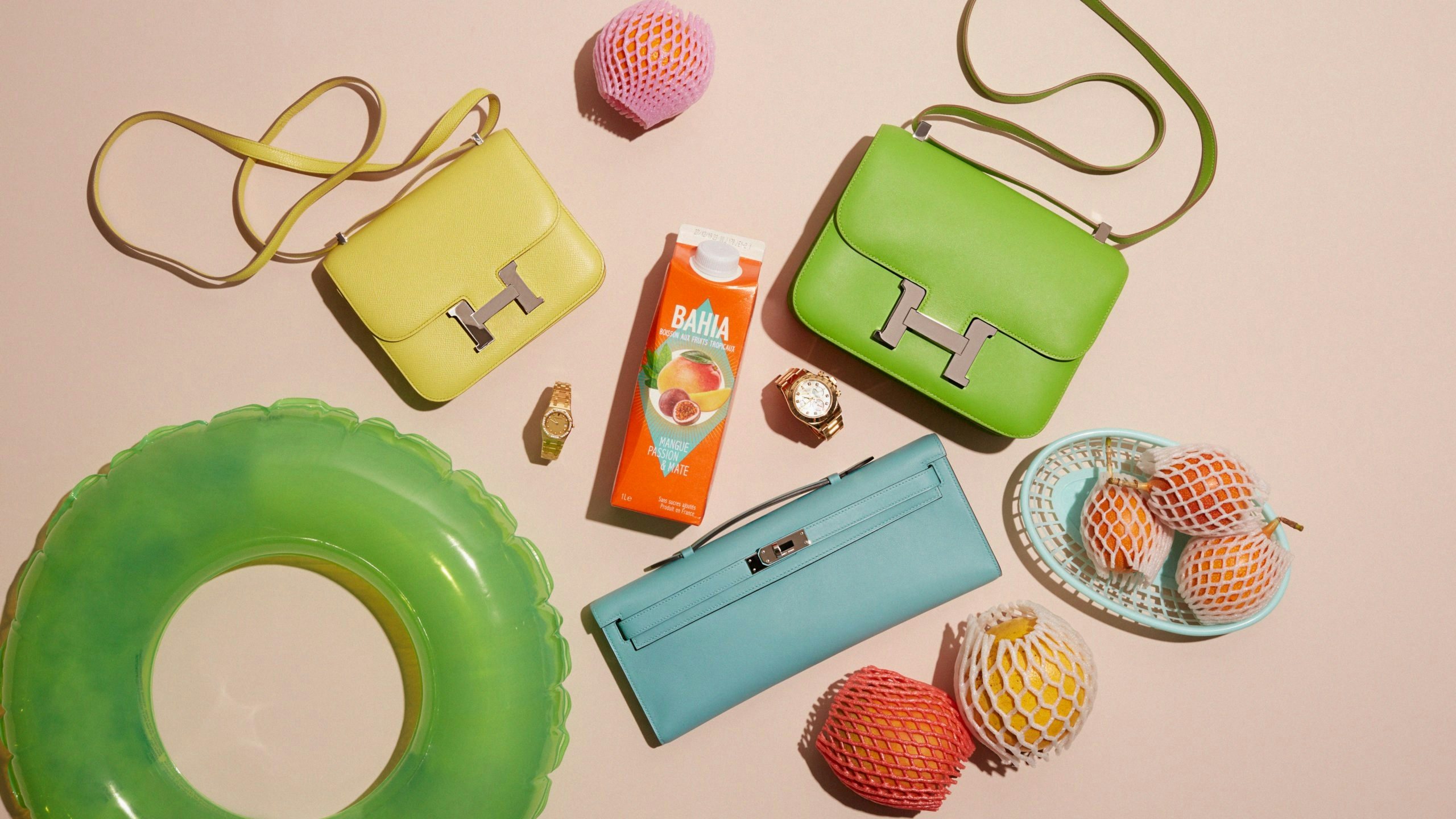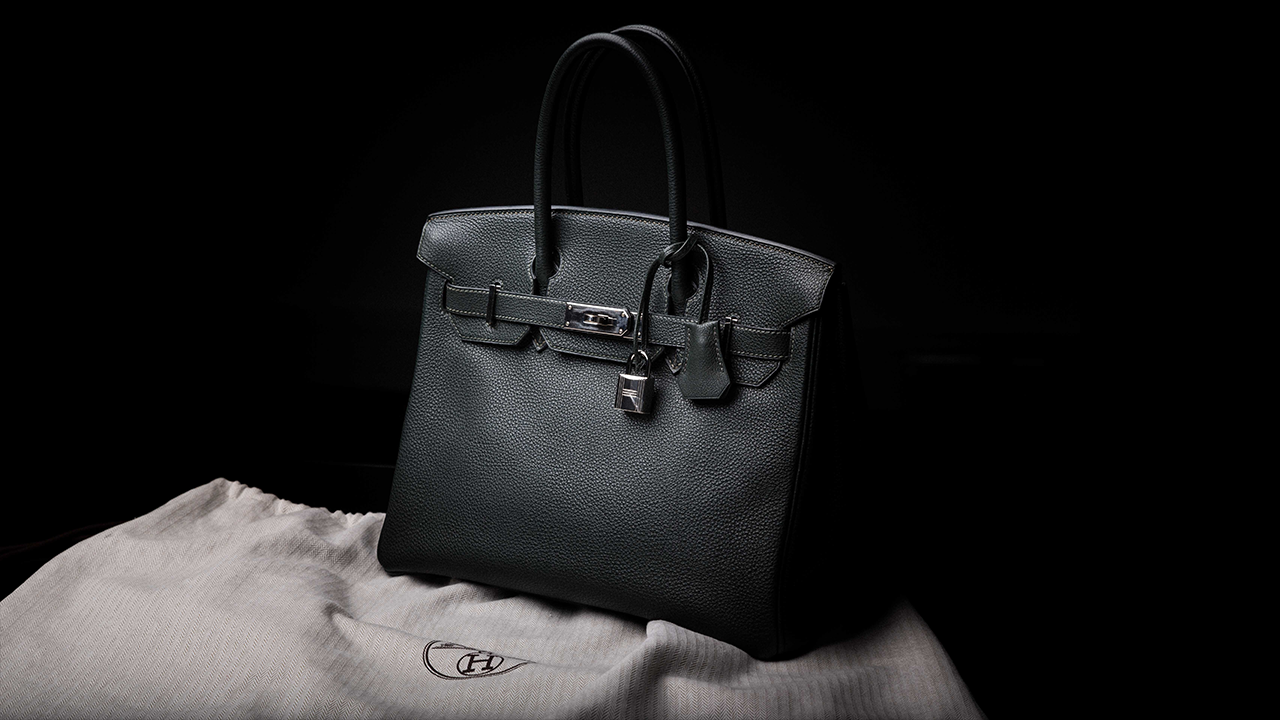Chinese netizen Banlimi (半粒米) loves vintage bags. She browses platforms like Vestiaire Collective, where she frequently finds limited-edition products or unique designs. Meanwhile, the cost-effectiveness of these second-hand luxury products is what’s most attractive to her friend Vincci (桃子小姐). Banlimi explains on Weibo how easy it is to buy used limited-edition Hermès compared to buying new products in-store, and Vincci adds that buying used fashion is a good way to be more sustainable.
In a market that has been traditionally opposed to pre-owned goods, comments like these mark a dramatic shift. Yet as consumer trends change, this is hardly surprising. Chinese consumers have always sought variety, newness, and affordability, and recent budget constraints due to COVID-19 — alongside an uptick in wellness trends — have meant that Chinese citizens are considering their purchases more. For some, the answer is to stop buying altogether: The Gen-Z movement #ditchyourstuff now has 150 million views and 177k discussions in China.
Coresight Research has identified that as China exits the pandemic, consumers are saving money and adopting a more rational approach when it comes to spending. Travel limitations mean new holiday trends adopted by young Chinese working in major cities such as ‘vintage shopping’ in Japan (#Japanesevintage has 73,000 posts and 25 million views on Weibo) will likely lead to sales on re-commerce sites instead.
Prior to the pandemic, the research agency Mobdata estimated the overall resale market would reach around 178 billion in 2020. The Boston Consulting Group reported that a rise in the buying and selling of pre-owned luxury was predicted to increase turnover from 25 billion in 2018 to 36 billion by 2021.
These post-pandemic trends are good news for the sector, but if resale continues to grow at current predictions, where would that leave the primary luxury market, which is largely dependent on Chinese consumers? Jing Daily takes a look at recent trends in the sector and ways that luxury brands can protect themselves against this trend.
China’s ocean of resale is a nuanced landscape. From physical retail to auctions and registered daigou to personal shoppers, vintage dealers, KOLs, and celebrities, the channels are many and varied, and the term “second-hand” even regularly disputed. However, e-commerce dominates the market, and re-commerce apps have slowly been penetrating China’s digital infrastructure over the last decade.
Established local apps like Alibaba’s Idle Fish (China’s largest re-commerce trading platform with 200 million registered users, half of whom were born after 1990) focus on selling second-hand products. Luxury e-commerce platform Secoo, which sells both pre-owned and new products, has been joined by startups like Plum, Yousheyipai, and Go Share 2. And now that the international platform Vestiaire Collective has recalibrated its focus onto China, the luxury resale market has never been more competitive.
Resale trends during and after lock-down#
During COVID-19, platforms of all sizes, from Plum to Secoo, have reported an acceleration in usage. According to Katy Cheng, a research associate at Coresight Research, this might be explained by the fact that Chinese consumers have been adopting a more rational spending mindset. This trend, in turn, could lead to a rise in the ethical purchase models that these consumers now want. “This change of consumer mindset, coupled with price hikes from some heritage luxury brands, could benefit the resale market,” Cheng stated.
This change is visible in the large sales increase for brand offerings at affordable price points in China, said Lucie Finet, head of Hong Kong and Greater China at the global pre-owned luxury site Vestiaire Collective. “Resale is becoming a part of daily life,” Finet added. “We have seen an increase in sales — three-times more sold in two months — especially driven by medium price points.” In real terms, this means that they’re selling more “affordable” luxury brands like Marc Jacobs.
A piqued interest in accessible luxury is positive news for re-commerce more widely, and Vestiaire Collective noted that “the monetization of wardrobes has driven more frequency in selling behaviors,” since Chinese luxury buyers now see there’s a market for their so-called ‘pre-loved’ items. Simply put, Finet has witnessed consumers “selling more everyday items.”
The livestreaming video app Douyin has seen a rise in vintage sellers of pre-owned luxury bags, while the luxury livestreaming app Feiyu has also grown in popularity. A spokesperson from Secoo agreed that livestreams featuring second-hand goods, where audiences can request to see wear-and-tear up close) has exploded over the last few months, garnering between 20,000 and 30,000 views per session.
Building trust and authenticity#
Celebrities are not only normalizing the trend, but they are also helping give the sector credibility, and Idle Fish has seen several celebrities open accounts. Chinese actress Zheng Shuang, who has roughly 2.6 million followers on Idle Fish, sold an Hermès notebook on the platform that had an original price of roughly 77 (550 RMB) for 21 (150 RMB). Athena Chen, WGSN’s Senior Editor for the Asia-Pacific region, suggested that “Celebrity-sold goods are particularly popular among luxury shoppers because they trust the authenticity of items owned by celebrities and aspire to follow their fashion tastes.”
The kind of consumer trust that’s found in a KOL or peer group has been central in overcoming resale’s biggest stumbling block: authenticity. The origin of a product isn’t an issue when buying new products in a store, so re-commerce companies have had to work hard to address this issue. Moreover, the growth of second-hand product livestreaming with ‘high def’ cameras, which allow audiences to see the products up-close in real-time, helps inject more integrity into the sector.
Idle Fish allows users to build “fish ponds” of shared interests or locations where sellers can build a sense of community through word-of-mouth recommendations. Companies like Secoo have kiosks where goods can be repaired, and where they also display additional products for consumers to see and inspect. On top of that, the site also sponsors partnerships with endorsed collaborators, such as Vestiaire Collective’s tie-up with the retailer Joyce, to further change perceptions of credibility.
Ensuring credibility is even more necessary when supply and demand trends fluctuate or when Chinese buyers become the suppliers. Pierre Everling, the chief regional officer APAC, at Vestiaire Collective, predicts that China will soon be the biggest second-hand supply market, but one of the key reasons it hasn't materialized yet is trustworthiness. But is there a way Vestiaire Collective can help?
“We are pushing and empowering our community to provide that trust in the market, and we have processes and tools that we’ve developed to bring this authenticity to the market,” he stated. And since that Chinese buyers are the biggest consumers of luxury goods globally, it only makes sense that some have already tapped into global selling platforms. Chen at WGSN noted that savvy Chinese sellers are already taking to channels available in the West, like Depop, to broaden their consumer base.
How fashion brands can foolproof themselves as resale grows#
Provided China can address this issue of trustworthiness, brands should think carefully about how to position themselves against this new exchange model. The Boston Consulting Group’s report suggested the resale sector could bolster designers' impressions. In fact, the report said the segment offered a “powerful opportunity for luxury brands to boost their image and expand their consumer base.”
Chen recommended that brands create their own resale channels for bringing reuse and recycling into their consumers’ shopping journey. In addition, they could establish an official presence on platforms that have a luxury focus and a reputation for authenticity. “Brands that offer the chance to shop vintage styles will be more likely to engage consumers beyond the initial sale of new products and attract consumers looking for unique items, as opposed to ubiquitous seasonal trends,” Chen said to Jing Daily.
Secoo’s spokesperson adamantly stated that these re-commerce platforms aren’t damaging to brands and that they’re actually helping bounce customers to brand stores at a later date. Furthermore, the Boston Consulting Group report showed that sellers of second-hand goods are most often buyers of first-hand luxury items. Therefore, luxury brands could view the re-commerce market as complementary in the way it makes the same products (albeit pre-owned) more affordable. Finet considers second-hand products and Vestiaire Collective to work “hand in hand” with brands. “Some millennials who can’t afford a full-price Louis Vuitton bag might go to a resale platform, so it’s the first touchpoint with the brand,” she said.
Going forward, brands need to devote more attention to a product’s entire lifecycle — not just its initial sale — by rethinking distribution, which will validate full-price goods through a variety of sellers. Given their domination of the China market, KOLs also need more specialized strategies that would benefit brands. Gifting is one channel to explore, and Chen observed that many resale items that were purchased through KOLs were as PR gifts from luxury brands.
Fashion norms around the world have been dramatically rewired. The fashion week system, which has dominated the fashion industry for over 70 years, has already been mostly obliterated. Could the radical overhaul of resale make the supply chain model next? If the recent #ditchyourstuff trend is one to go by, then brands should probably be on high alert.

